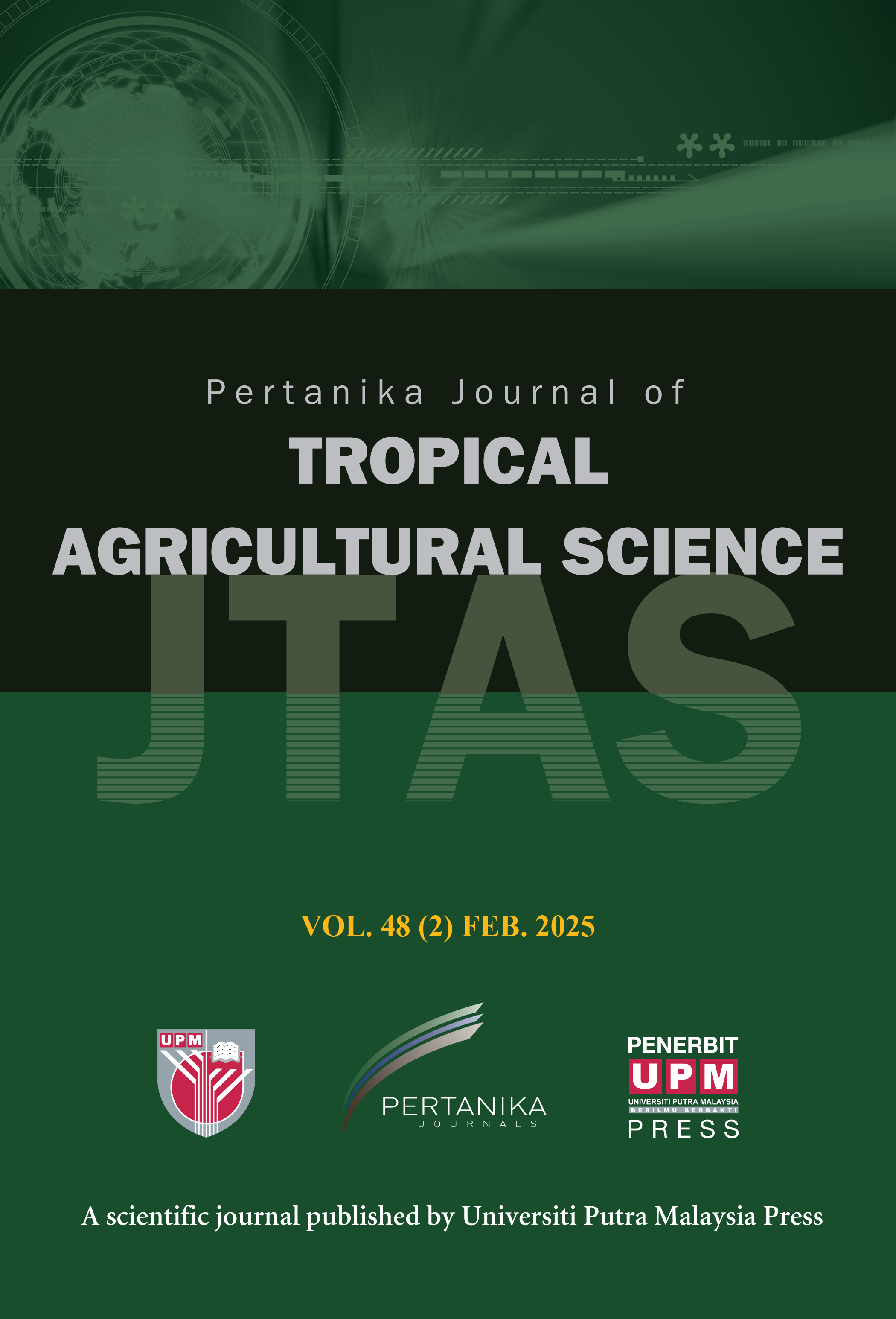PERTANIKA JOURNAL OF TROPICAL AGRICULTURAL SCIENCE
e-ISSN 2231-8542
ISSN 1511-3701
Colonisation of Dung Beetles (Coleoptera: Scarabaeidae) of Smaller Body Size in the Bangi Forest Reserve, Selangor, Malaysia: A Model Sampling Site for a Secondary Forest Area
Muhaimin, A. M. D., Hazmi, I. R. and Yaakop, S.
Pertanika Journal of Tropical Agricultural Science, Volume 38, Issue 4, November 2015
Keywords: Scarab beetles, biodiversity, bioindicator, Shannon diversity index
Published on:
The diversity of dung beetles (Coleoptera: Scarabaeidae) was measured at the Bangi Forest Reserve in Selangor, Malaysia (Hutan Simpan Bangi, HSB), as a model sampling site for the secondary forest ecosystem. The diversity analysis gave a value of 2.17 for the Shannon diversity index (H'), 1.42 for the richness index (R') and 0.87 for the evenness index (E). A total of 575 individuals belonging to 10 species of dung beetles were collected. They comprised of Catharsius renaudpauliani, Catharsius sp. 1, Microcopris aff. hidakai, Onthophagus "obscurior group", Onthophagus crassicollis, O. recticornutus, O. rutilans, O. trituber, Paragymnopleurus maurus and Sisyphus thoracicus. The small dung beetle Onthophagus crassicollis had the highest number of individuals (137/575, 23.83%) with a body size range of 4.5 ± 2.5 mm in length. A total of 9/10 species collected in HSB were classified as small-bodied species (8% large body, 92% small body) and the statistical analysis showed a significant body size difference compared with the large-bodied species, C. renaudpauliani. O. crassicollis showed the highest abundance in the secondary forest, a model site for studying forest disturbance. The abundance of dung beetles could potentially be used as a good bioindicator of habitat disruption in the tropical forest ecosystem. Our study also highlighted that the abundance of species based on body size was affected by the availability of the food sources also from different sizes of mammal dung.
ISSN 1511-3701
e-ISSN 2231-8542




